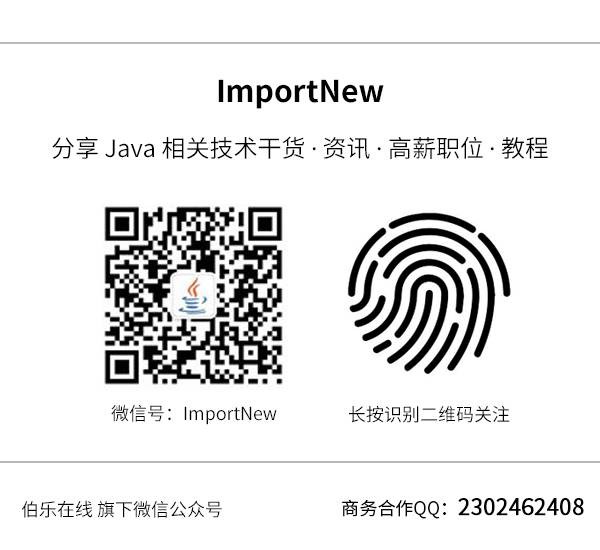(點選上方公眾號,可快速關註)
來源:SylvanasSun’s Blog ,
sylvanassun.github.io/2018/03/16/2018-03-16-map_family/
AbstractMap
AbstractMap是一個抽象類,它是Map介面的一個骨架實現,最小化實現了此介面提供的抽象函式。在Java的Collection框架中基本都遵循了這一規定,骨架實現在介面與實現類之間構建了一層抽象,其目的是為了復用一些比較通用的函式以及方便擴充套件,例如List介面擁有骨架實現AbstractList、Set介面擁有骨架實現AbstractSet等。
下麵我們按照不同的操作型別來看看AbstractMap都實現了什麼,首先是查詢操作:
package java.util;
import java.util.Map.Entry;
public abstract class AbstractMap
implements Map {
protected AbstractMap() {
}
// Query Operations
public int size() {
return entrySet().size();
}
// 鍵值對的集合檢視留給具體的實現類實現
public abstract Set
> entrySet(); public boolean isEmpty() {
return size() == 0;
}
/**
* 遍歷entrySet,然後逐個進行比較。
*/
public boolean containsValue(Object value) {
Iterator
> i = entrySet().iterator(); if (value==null) {
while (i.hasNext()) {
Entry
e = i.next(); if (e.getValue()==null)
return true;
}
} else {
while (i.hasNext()) {
Entry
e = i.next(); if (value.equals(e.getValue()))
return true;
}
}
return false;
}
/**
* 跟containsValue()同理,只不過比較的是key。
*/
public boolean containsKey(Object key) {
Iterator
> i = entrySet().iterator(); if (key==null) {
while (i.hasNext()) {
Entry
e = i.next(); if (e.getKey()==null)
return true;
}
} else {
while (i.hasNext()) {
Entry
e = i.next(); if (key.equals(e.getKey()))
return true;
}
}
return false;
}
/**
* 遍歷entrySet,然後根據key取出關聯的value。
*/
public V get(Object key) {
Iterator
> i = entrySet().iterator(); if (key==null) {
while (i.hasNext()) {
Entry
e = i.next(); if (e.getKey()==null)
return e.getValue();
}
} else {
while (i.hasNext()) {
Entry
e = i.next(); if (key.equals(e.getKey()))
return e.getValue();
}
}
return null;
}
}
可以發現這些操作都是依賴於函式entrySet()的,它傳回了一個鍵值對的集合檢視,由於不同的實現子類的Entry實現可能也是不同的,所以一般是在內部實現一個繼承於AbstractSet且泛型為Map.Entry的內部類作為EntrySet,接下來是修改操作與批次操作:
// Modification Operations
/**
* 沒有提供實現,子類必須重寫該方法,否則呼叫put()會丟擲異常。
*/
public V put(K key, V value) {
throw new UnsupportedOperationException();
}
/**
* 遍歷entrySet,先找到標的的entry,然後刪除。
*(還記得之前說過的嗎,集合檢視中的操作也會影響到實際資料)
*/
public V remove(Object key) {
Iterator
> i = entrySet().iterator(); Entry
correctEntry = null; if (key==null) {
while (correctEntry==null && i.hasNext()) {
Entry
e = i.next(); if (e.getKey()==null)
correctEntry = e;
}
} else {
while (correctEntry==null && i.hasNext()) {
Entry
e = i.next(); if (key.equals(e.getKey()))
correctEntry = e;
}
}
V oldValue = null;
if (correctEntry !=null) {
oldValue = correctEntry.getValue();
i.remove();
}
return oldValue;
}
// Bulk Operations
/**
* 遍歷引數m,然後將每一個鍵值對put到該Map中。
*/
public void putAll(Map extends K, ? extends V> m) {
for (Map.Entry extends K, ? extends V> e : m.entrySet())
put(e.getKey(), e.getValue());
}
/**
* 清空entrySet等價於清空該Map。
*/
public void clear() {
entrySet().clear();
}
AbstractMap並沒有實現put()函式,這樣做是為了考慮到也許會有不可修改的Map實現子類繼承它,而對於一個可修改的Map實現子類則必須重寫put()函式。
AbstractMap沒有提供entrySet()的實現,但是卻提供了keySet()與values()集合檢視的預設實現,它們都是依賴於entrySet()傳回的集合檢視實現的,原始碼如下:
/**
* keySet和values是lazy的,它們只會在第一次請求檢視時進行初始化,
* 而且它們是無狀態的,所以只需要一個實體(初始化一次)。
*/
transient Set
keySet; transient Collection
values; /**
* 傳回一個AbstractSet的子類,可以發現它的行為都委託給了entrySet傳回的集合檢視
* 與當前的AbstractMap實體,所以說它自身是無狀態的。
*/
public Set
keySet() { Set
ks = keySet; if (ks == null) {
ks = new AbstractSet
() { public Iterator
iterator() { return new Iterator
() { private Iterator
> i = entrySet().iterator(); public boolean hasNext() {
return i.hasNext();
}
public K next() {
return i.next().getKey();
}
public void remove() {
i.remove();
}
};
}
public int size() {
return AbstractMap.this.size();
}
public boolean isEmpty() {
return AbstractMap.this.isEmpty();
}
public void clear() {
AbstractMap.this.clear();
}
public boolean contains(Object k) {
return AbstractMap.this.containsKey(k);
}
};
keySet = ks;
}
return ks;
}
/**
* 與keySet()基本一致,唯一的區別就是傳回的是AbstractCollection的子類,
* 主要是因為value不需要保持互異性。
*/
public Collection
values() { Collection
vals = values; if (vals == null) {
vals = new AbstractCollection
() { public Iterator
iterator() { return new Iterator
() { private Iterator
> i = entrySet().iterator(); public boolean hasNext() {
return i.hasNext();
}
public V next() {
return i.next().getValue();
}
public void remove() {
i.remove();
}
};
}
public int size() {
return AbstractMap.this.size();
}
public boolean isEmpty() {
return AbstractMap.this.isEmpty();
}
public void clear() {
AbstractMap.this.clear();
}
public boolean contains(Object v) {
return AbstractMap.this.containsValue(v);
}
};
values = vals;
}
return vals;
}
它還提供了兩個Entry的實現類:SimpleEntry與SimpleImmutableEntry,這兩個類的實現非常簡單,區別也只是前者是可變的,而後者是不可變的。
private static boolean eq(Object o1, Object o2) {
return o1 == null ? o2 == null : o1.equals(o2);
}
public static class SimpleEntry
implements Entry
, java.io.Serializable {
private static final long serialVersionUID = -8499721149061103585L;
private final K key;
private V value;
public SimpleEntry(K key, V value) {
this.key = key;
this.value = value;
}
public SimpleEntry(Entry extends K, ? extends V> entry) {
this.key = entry.getKey();
this.value = entry.getValue();
}
public K getKey() {
return key;
}
public V getValue() {
return value;
}
public V setValue(V value) {
V oldValue = this.value;
this.value = value;
return oldValue;
}
public boolean equals(Object o) {
if (!(o instanceof Map.Entry))
return false;
Map.Entry,?> e = (Map.Entry,?>)o;
return eq(key, e.getKey()) && eq(value, e.getValue());
}
public int hashCode() {
return (key == null ? 0 : key.hashCode()) ^
(value == null ? 0 : value.hashCode());
}
public String toString() {
return key + “=” + value;
}
}
/**
* 它與SimpleEntry的區別在於它是不可變的,value被final修飾,並且不支援setValue()。
*/
public static class SimpleImmutableEntry
implements Entry
, java.io.Serializable {
private static final long serialVersionUID = 7138329143949025153L;
private final K key;
private final V value;
public SimpleImmutableEntry(K key, V value) {
this.key = key;
this.value = value;
}
public SimpleImmutableEntry(Entry extends K, ? extends V> entry) {
this.key = entry.getKey();
this.value = entry.getValue();
}
public K getKey() {
return key;
}
public V getValue() {
return value;
}
public V setValue(V value) {
throw new UnsupportedOperationException();
}
public boolean equals(Object o) {
if (!(o instanceof Map.Entry))
return false;
Map.Entry,?> e = (Map.Entry,?>)o;
return eq(key, e.getKey()) && eq(value, e.getValue());
}
public int hashCode() {
return (key == null ? 0 : key.hashCode()) ^
(value == null ? 0 : value.hashCode());
}
public String toString() {
return key + “=” + value;
}
}
我們透過閱讀上述的原始碼不難發現,AbstractMap實現的操作都依賴於entrySet()所傳回的集合檢視。剩下的函式就沒什麼好說的了,有興趣的話可以自己去看看。
【關於投稿】
如果大家有原創好文投稿,請直接給公號傳送留言。
① 留言格式:
【投稿】+《 文章標題》+ 文章連結
② 示例:
【投稿】《不要自稱是程式員,我十多年的 IT 職場總結》:http://blog.jobbole.com/94148/
③ 最後請附上您的個人簡介哈~
看完本文有收穫?請轉發分享給更多人
關註「ImportNew」,提升Java技能

 知識星球
知識星球